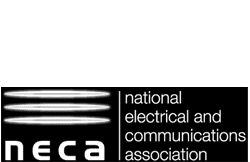Traffolyte Labelling in Commercial and Retail Buildings
24 July 2023Traffolyte labelling is an essential aspect of electrical system installation often done to identify wires and cables, control panels, switches, and other electrical components. It generally involves engraving text and graphics on multi-layered plastic sheets, which are known to resist chemicals, moisture, heat, and UV rays.
This part of electrical system installation is often done in commercial and retail buildings as these properties feature electrical components that should be labelled correctly. Without Traffolyte labels, employees may be at risk of getting electrocuted or other injuries related to the electrical components of their workplace.
An Overview of Traffolyte Labelling
Traffolyte labelling is done in Traffolyte, which is a type of thermosetting plastic made from layers of phenolic resin and melamine formaldehyde laminated under high pressure and temperature. The composition of the plastic makes it suitable for harsh environments.
The labels integrated into Traffolyte materials are made by engraving text or symbols into their top layer, revealing the contrasting colour of the underlayer layer. The engraving process is often done through a laser or CNC engraving machine.
Primary Steps in Traffolyte Labelling
Numerous steps are involved in Traffolyte labelling.
The first step is to identify the wires or cables that should be labelled. It is done by following the wiring diagram or schematic provided by the manufacturer or the client. Once the wires have been identified, the next step of this process is to prepare the labels. It involves choosing the appropriate size and colour of the Traffolyte sheet and cutting it to the required dimensions.
The next step in Traffolyte labelling is to engrave the text or symbol onto the sheet using an engraving machine. The text or symbol may be pre-designed using computer-aided design software to ensure precise positioning and sizing of the engraving. After completing the engraving, the Traffolyte labels are cleaned to remove any debris or residue. These labels are then attached to the wires or cables through cable ties or adhesive labels.
Traffolyte labelling can also be done on control panels, switchboards, and other electrical components by using larger and more detailed labels. These labels may feature more information like the function of the component, the voltage and current rating, the manufacturer’s name, and the model number.
Traffolyte Labelling Major Benefits
The use of Traffolyte labelling in commercial and retail electrical systems provides a range of benefits. These benefits include the following.
• Improved Safety: Traffolyte labelling can help identify electrical components and panels in commercial and retail settings, making it easier to isolate and de-energise the power source during maintenance or repair. This reduces the risk of accidental electrocution, fire, or other hazards that could arise from mishandling electrical equipment.
• Compliance with Regulations: Electrical systems in commercial and retail settings are subject to strict regulations and standards that involve labelling their components correctly. Traffolyte labelling can help meet these requirements, making it easy for facility managers to comply with the relevant regulations and standards.
• Easy Maintenance: During maintenance, building personnel should easily identify the components that need servicing and ensure they are de-energised before work commences. Traffolyte labelling can provide clear and easy-to-read labels that identify components, making it easier for maintenance staff to locate and service them.
Traffolyte labelling is an essential aspect of commercial and retail electrical systems as it can maintain their efficiency, performance, and safety. Building owners and managers can benefit from partnering with a trusted labelling service provider to ensure their buildings are appropriately labelled and compliant with relevant regulations.
Optimized by: Netwizard SEO


